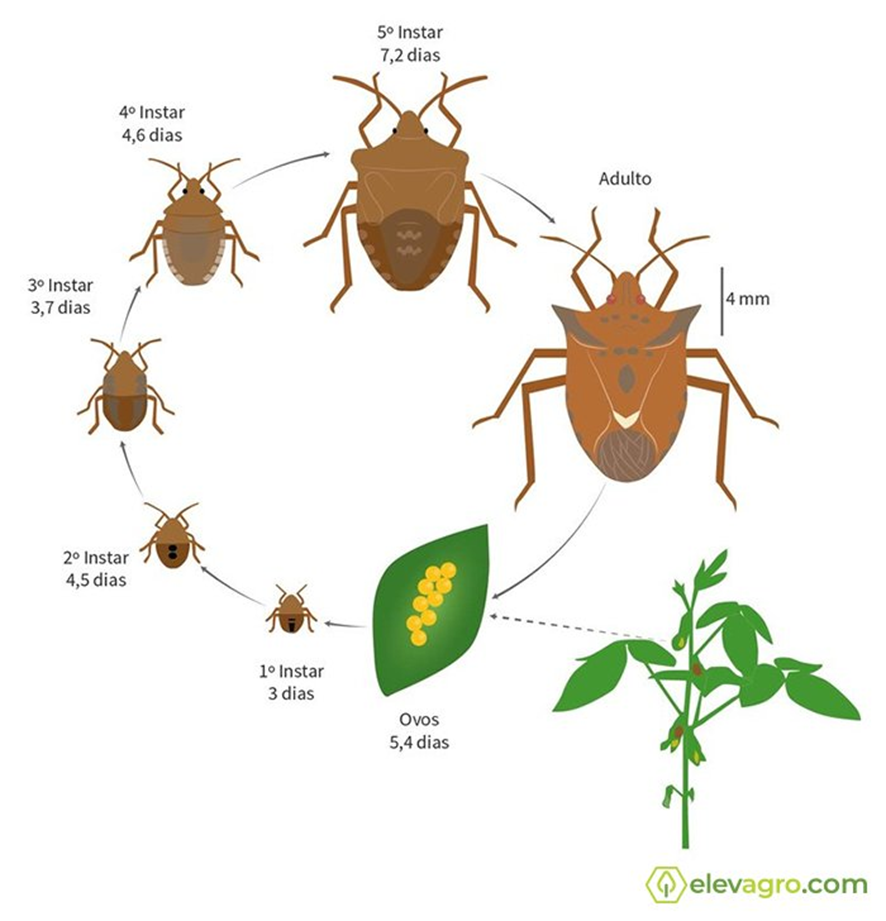Pests are one of the main threats to these yield components and among them the most harmful is undoubtedly the soy bug, in its different species. The brown, small-green, green and green-bellied soy bugs are sucking insects present in our production system. All cause major damage in the reproductive period of the crop, reflecting direct and indirect damage.
What do they feed on?
These insects feed primarily on soybeans, causing a decrease in their weight, abortion, reduction of germination power and vigor of the crop, as well as a decrease in the oil content. Indirectly, soy bugs can still introduce diseases and cause physiological disorders such as stem and leaf retention.
How it affect the productivity?
These suckers can cause productivity loss of up to 30% in soybean crops. One soy bug per m² leads to a reduction of 49 to 120 kg of grains/ha. This variation in grain reduction depends on the stink bug species, climate, stage of culture, cultivating productive ceiling.

Dissemination
The soy bug's ability to spread and survive strengthens the damage caused by the pest. By attacking many plants and having the ability to survive in a state of diapause, a kind of “hibernation” during off-season periods, they have perpetuated themselves in our system, living increasingly in larger populations - as in the case of late crops, where the population pressure rises. As the first cultivars enter the reproductive phase, the stink bug population returns to full activity, which occurs earlier and earlier. Therefore, the stink bug population becomes larger with each season, especially when the control is carried out incorrectly.

Control
Currently, we have extremely efficient practices and tools to reduce the population of bed bugs and control them. The elimination of crop residues and weeds in the off-season, combined with constant monitoring, are the most efficient preventive practices, as they contribute to any necessary measure. If the need to control the population is verified through the batting cloth, checking the established level of economic damage (2 insects/m), chemical control is indicated, which must consider the instar (stage of development) of the insect .
It is recommended to eliminate adults at the beginning of the cycle, through the use of products with shock action. Subsequently, invest in the control of all phases of the cycle, adults, nymphs and eggs, through the use of pyrethroids, carbamates and neonicotinoids.
Conclusion
The greatest efficiency will always be through constant monitoring and early control of the first population flows, followed by maintaining a low level of infestation. It is also recommended that in situations of greater technological demand, such as seed production, which does not tolerate levels of damage, control is carried out even during the soybean harvest phase, thus reducing direct damage to vegetables and reducing the final population of the plant. harvest. Thus, we also obtain lower residual pressures for our next crops, regardless of the crop. It is always important to act in favor of the next harvest.




